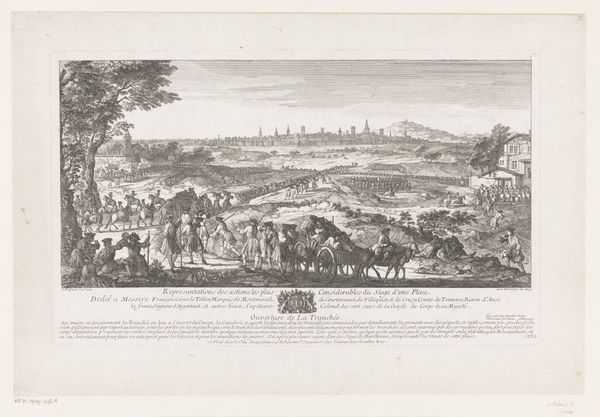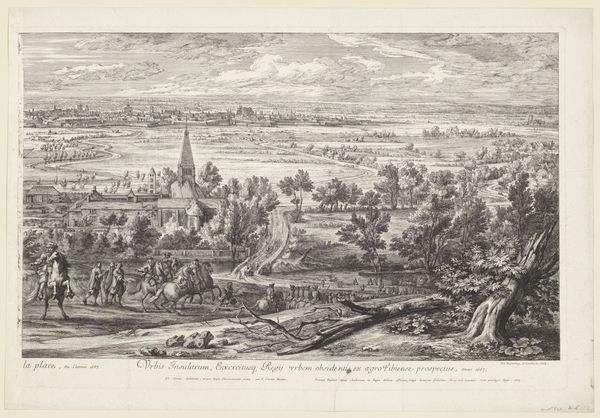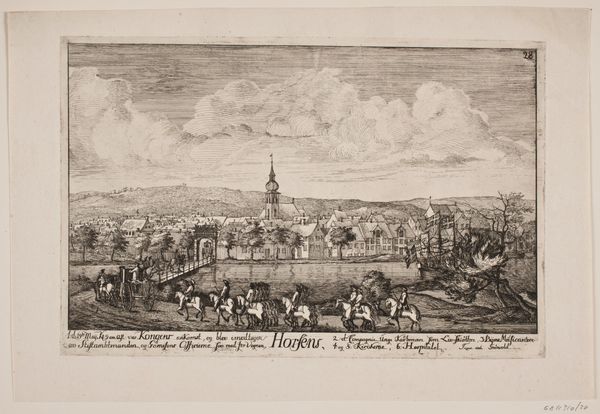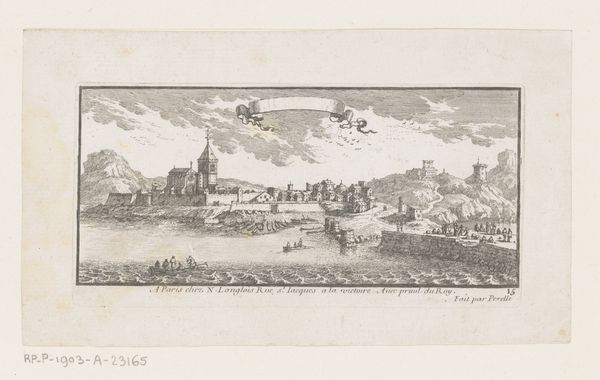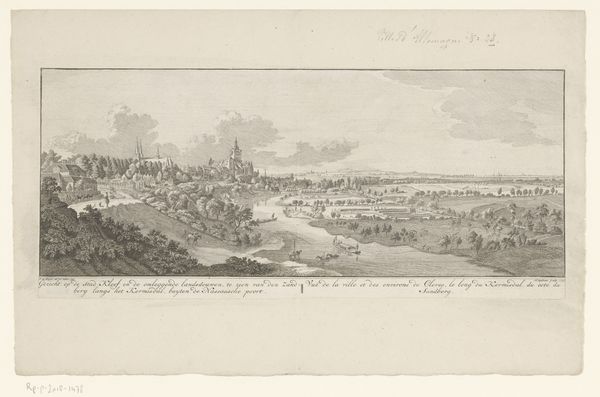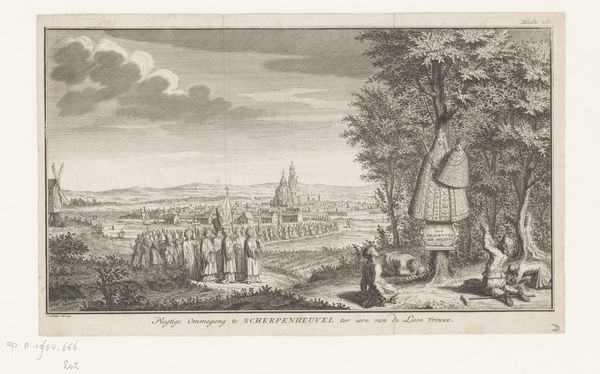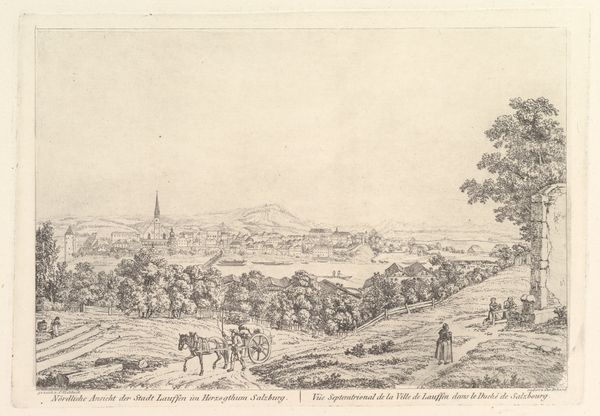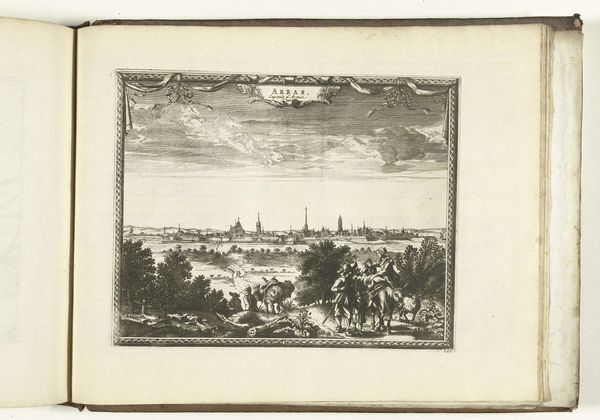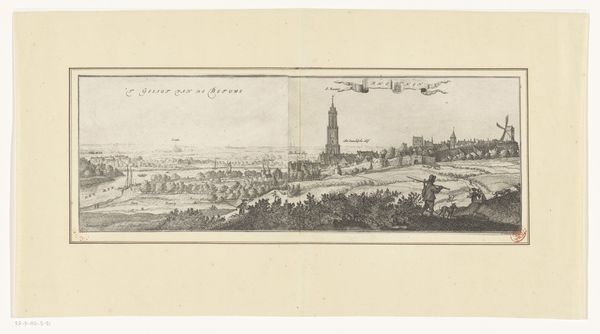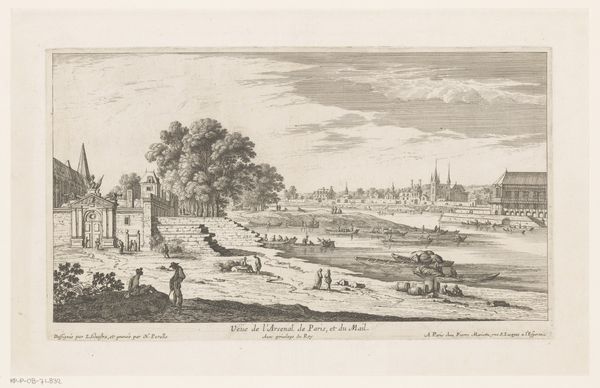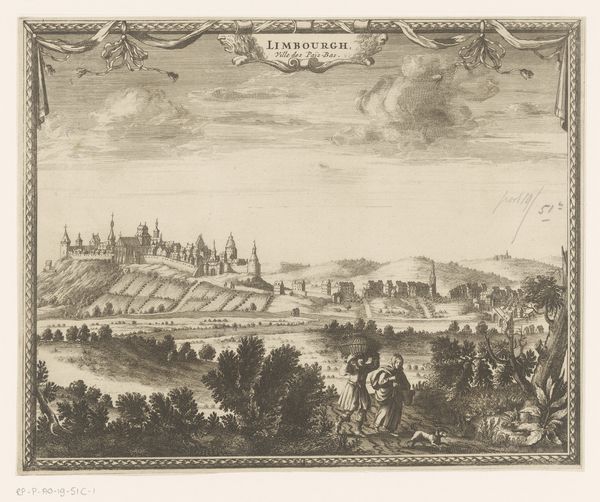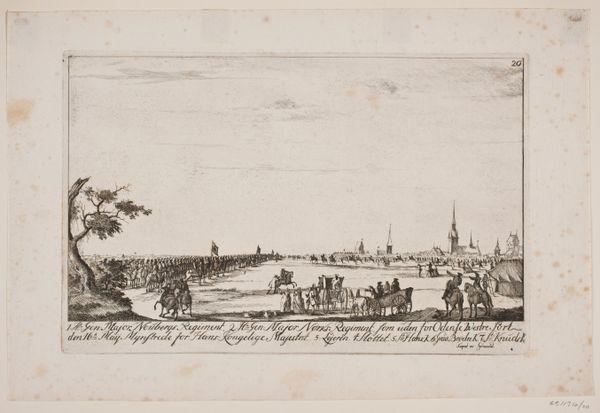
print, etching, engraving
#
baroque
# print
#
etching
#
old engraving style
#
landscape
#
history-painting
#
engraving
Dimensions: height 268 mm, width 411 mm
Copyright: Rijks Museum: Open Domain
Curator: This engraving, "Uittocht van het Spaanse garnizoen uit Hulst (rechterblad)"—or "Departure of the Spanish Garrison from Hulst"—by Pieter Nolpe, captures a specific historical moment in 1645, during the Eighty Years' War. What’s your immediate reaction to it? Editor: Well, looking at this landscape filled with figures in transit, I’m struck by how mundane it all seems for such a historically significant event. The atmosphere feels almost...casual, not the grand victory scene I might expect. Curator: Precisely! The print utilizes baroque landscape conventions to emphasize the spatial scale of this departure and thus amplify a sense of movement—observe the meticulous details Nolpe employs to show the vast Dutch landscape against a procession of people and supplies. The column, if you look closely, stretches toward the horizon line. Editor: I see it now; this emphasizes how power shifts. What's fascinating to me is the absence of overt celebration. The very act of documenting the retreat, framing it almost like a scenic vista, subtly asserts Dutch control. It's a re-writing of the narrative. Curator: Indeed. Consider the cultural memory at play. The symbols in the scene all relate to this power transition. Each element invites the viewer to reflect on not only the immediate history being portrayed, but its continuity with ongoing societal evolution. This image speaks to the psychological impact of regime change. Editor: It's also interesting to note who *isn't* prominently featured. Where are the common people of Hulst? This piece seems focused solely on the military and logistics of the Spanish retreat, thus obscuring the experiences of those most impacted. This feels like an elite's view of history. Curator: A very salient observation. It points to a larger conversation concerning visual records—and how such art informs subsequent history painting. As such, we come to find history in visual terms, revealing the complexities that still impact society today. Editor: It underscores how deeply power structures and propaganda get embedded in our collective memory. Curator: This detailed work certainly leaves us with much to ponder about art’s role in shaping perspectives on events of historical import. Editor: Indeed. The understated nature of the print holds layers of narratives concerning triumph and loss, providing ample opportunity to reflect critically on representations of power.
Comments
No comments
Be the first to comment and join the conversation on the ultimate creative platform.
